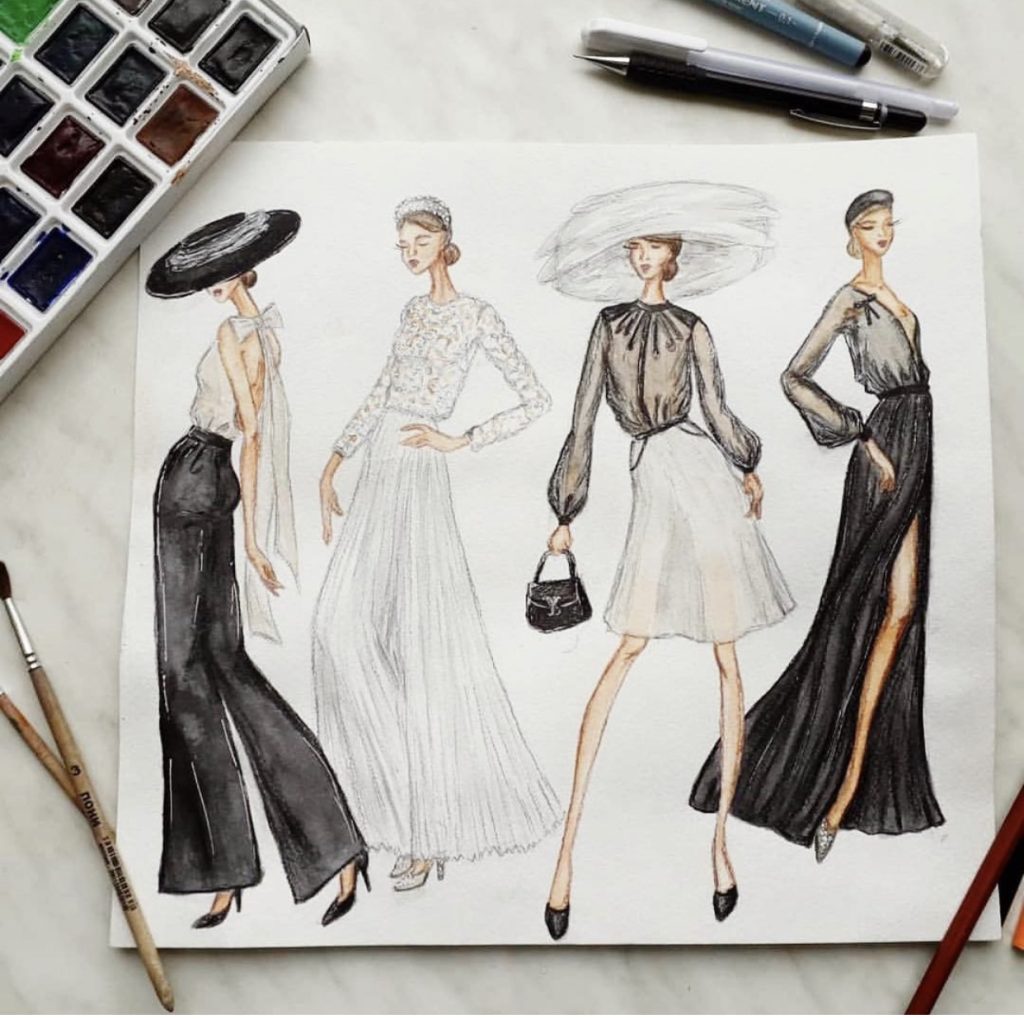
Fashion Illustration Techniques In the world of fashion, where creativity reigns supreme, Fashion Illustration serves as a captivating and essential medium. It’s the visual language that brings couture to life, capturing the essence of style, texture, and form. In this exploration, we delve into the techniques and styles that define the realm of Fashion Illustration, unveiling the intricacies and nuances that make it an art form cherished by designers and enthusiasts alike.
The Canvas of Creativity
Before we dive into the techniques and styles, let’s establish the essence of Fashion Illustration. At its core, it’s the art of translating fashion concepts into visual representations. These illustrations serve as blueprints for designers, mood boards for collections, and works of art that capture the imagination of fashion enthusiasts.
The Marriage of Aesthetics and Precision
Fashion Illustration marries aesthetics with precision. It’s not just about drawing beautiful clothing; it’s about conveying the essence, movement, and mood of fashion. Each stroke of the pen or brush is deliberate, aiming to capture the spirit of style.
The Role of the Fashion Illustrator
The fashion illustrator plays a pivotal role in the design process. They work closely with designers to translate their visions into visual form. Whether it’s sketching initial ideas or creating stunning illustrations for marketing campaigns, their artistry is essential to the fashion world.
Techniques in Fashion Illustration
Fashion Illustration encompasses a diverse range of techniques, each with its unique approach and aesthetic appeal. Let’s unravel some of the most prominent techniques:
1. Pencil Sketching
Pencil sketching is the foundation of many fashion illustrations. It allows for precise linework, shading, and the creation of intricate details. Sketching is often the starting point for fashion designers to visualize their ideas.
2. Watercolor Elegance
Watercolor is beloved for its ability to create soft and flowing textures. It’s ideal for capturing the delicate drape of fabrics, the play of light on garments, and the subtle nuances of color. Watercolor illustrations often exude a sense of ethereal beauty.
3. Marker Magic
Markers are favored for their bold and vibrant colors. They provide a contemporary and dynamic look to fashion illustrations. Markers are excellent for highlighting key design elements and creating a sense of vibrancy.
4. Digital Precision
In the digital age, digital illustration tools like Adobe Illustrator and Procreate have revolutionized Fashion Illustration. These tools offer unmatched precision, making it easy to create clean lines, experiment with colors, and achieve a polished look.
5. Mixed Media Mastery
Some fashion illustrators embrace mixed media, combining various techniques to create unique and textured illustrations. This approach allows for a fusion of styles, making each piece a work of art.
Styles that Inspire
Just as fashion itself is diverse, Fashion Illustration boasts a wide array of styles, each with its own character and allure. Here are some notable styles that have left an indelible mark on the world of fashion illustration:
1. Realistic Renderings
Realism in fashion illustration aims for accuracy and precision. It seeks to create illustrations that closely resemble photographs, showcasing every detail of the garments, accessories, and models.
2. Minimalist Elegance
Minimalism strips away excess, focusing on simplicity and clean lines. Minimalist fashion illustrations often feature sparse backgrounds, allowing the clothing and accessories to take center stage.
3. Vintage Vibes
Vintage fashion illustrations evoke the charm of bygone eras. Styles from the ’20s, ’50s, or ’70s come to life with period-appropriate techniques and color palettes, transporting viewers to a different time.
4. Whimsical Watercolors
Watercolor illustrations embrace a dreamy and whimsical quality. These illustrations often have a loose and fluid style, capturing the romanticism of fashion.
5. Abstract Artistry
Abstract fashion illustrations push the boundaries of creativity. They use unconventional shapes, colors, and textures to create art that challenges traditional notions of beauty and style.
The Role of Inspiration and Mood Boards
Fashion illustrators often create inspiration and mood boards as part of their creative process. These boards feature a collage of images, sketches, and swatches that inform the direction of a fashion collection. Mood boards set the tone for the illustrations, guiding the color schemes, styles, and overall mood.
Beyond the Sketch: Marketing and Branding
Fashion Illustration goes beyond the sketchbook. It plays a pivotal role in fashion marketing and branding. These illustrations are used in various mediums, from lookbooks and advertisements to social media campaigns and websites. Fashion illustrators help convey the brand’s identity and the essence of each collection through their art.
The Artistry of Fashion Illustration
Fashion Illustration is more than just drawing clothes; it’s an art form that captures the soul of fashion. It melds techniques and styles to create a visual narrative that inspires, informs, and elevates the world of fashion. Whether it’s a minimalist pencil sketch or a vibrant digital masterpiece, fashion illustration breathes life into garments, making them more than fabric and thread—they become expressions of creativity and style.





